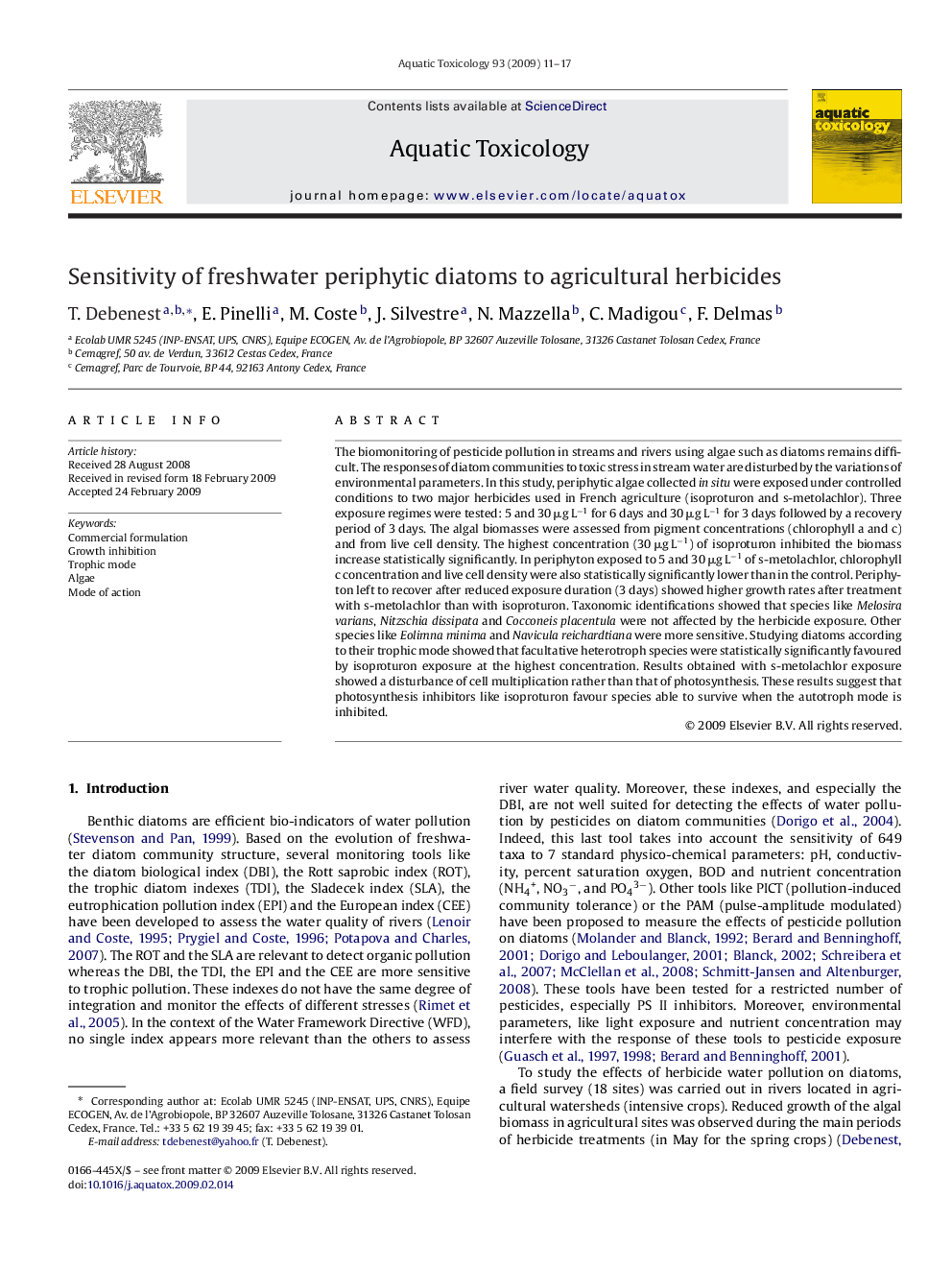| Article ID | Journal | Published Year | Pages | File Type |
|---|---|---|---|---|
| 4530547 | Aquatic Toxicology | 2009 | 7 Pages |
The biomonitoring of pesticide pollution in streams and rivers using algae such as diatoms remains difficult. The responses of diatom communities to toxic stress in stream water are disturbed by the variations of environmental parameters. In this study, periphytic algae collected in situ were exposed under controlled conditions to two major herbicides used in French agriculture (isoproturon and s-metolachlor). Three exposure regimes were tested: 5 and 30 μg L−1 for 6 days and 30 μg L−1 for 3 days followed by a recovery period of 3 days. The algal biomasses were assessed from pigment concentrations (chlorophyll a and c) and from live cell density. The highest concentration (30 μg L−1) of isoproturon inhibited the biomass increase statistically significantly. In periphyton exposed to 5 and 30 μg L−1 of s-metolachlor, chlorophyll c concentration and live cell density were also statistically significantly lower than in the control. Periphyton left to recover after reduced exposure duration (3 days) showed higher growth rates after treatment with s-metolachlor than with isoproturon. Taxonomic identifications showed that species like Melosira varians, Nitzschia dissipata and Cocconeis placentula were not affected by the herbicide exposure. Other species like Eolimna minima and Navicula reichardtiana were more sensitive. Studying diatoms according to their trophic mode showed that facultative heterotroph species were statistically significantly favoured by isoproturon exposure at the highest concentration. Results obtained with s-metolachlor exposure showed a disturbance of cell multiplication rather than that of photosynthesis. These results suggest that photosynthesis inhibitors like isoproturon favour species able to survive when the autotroph mode is inhibited.
